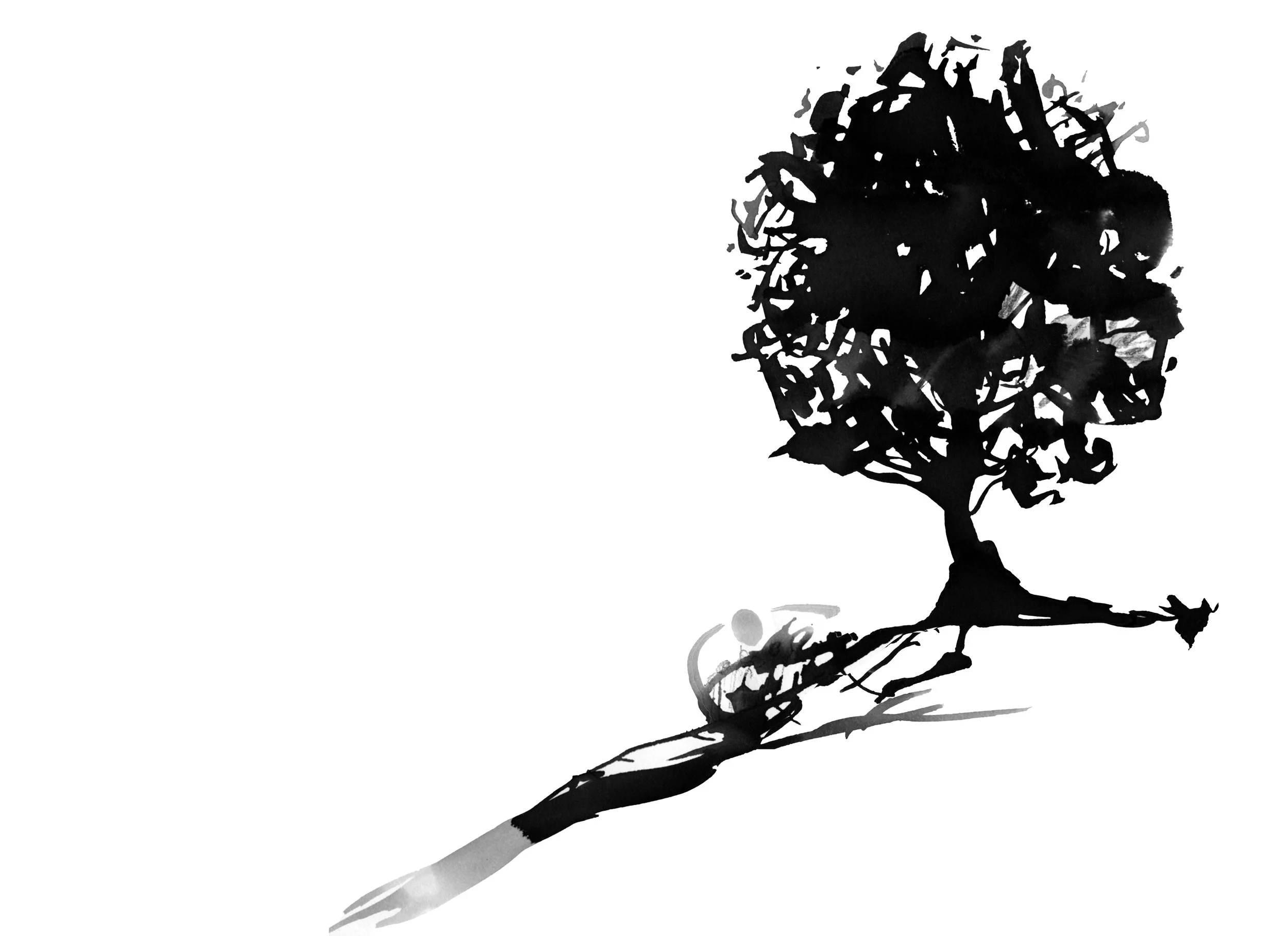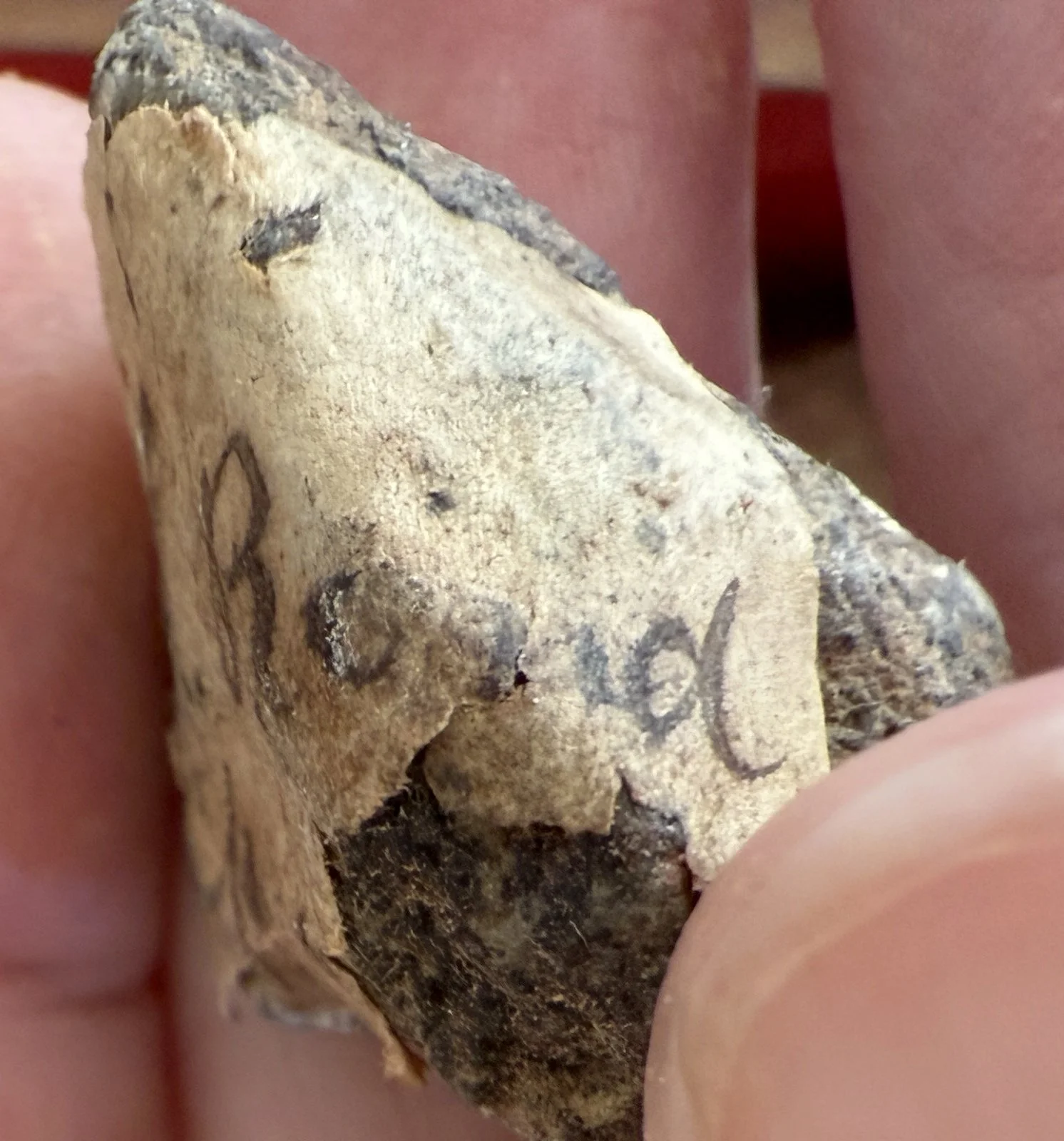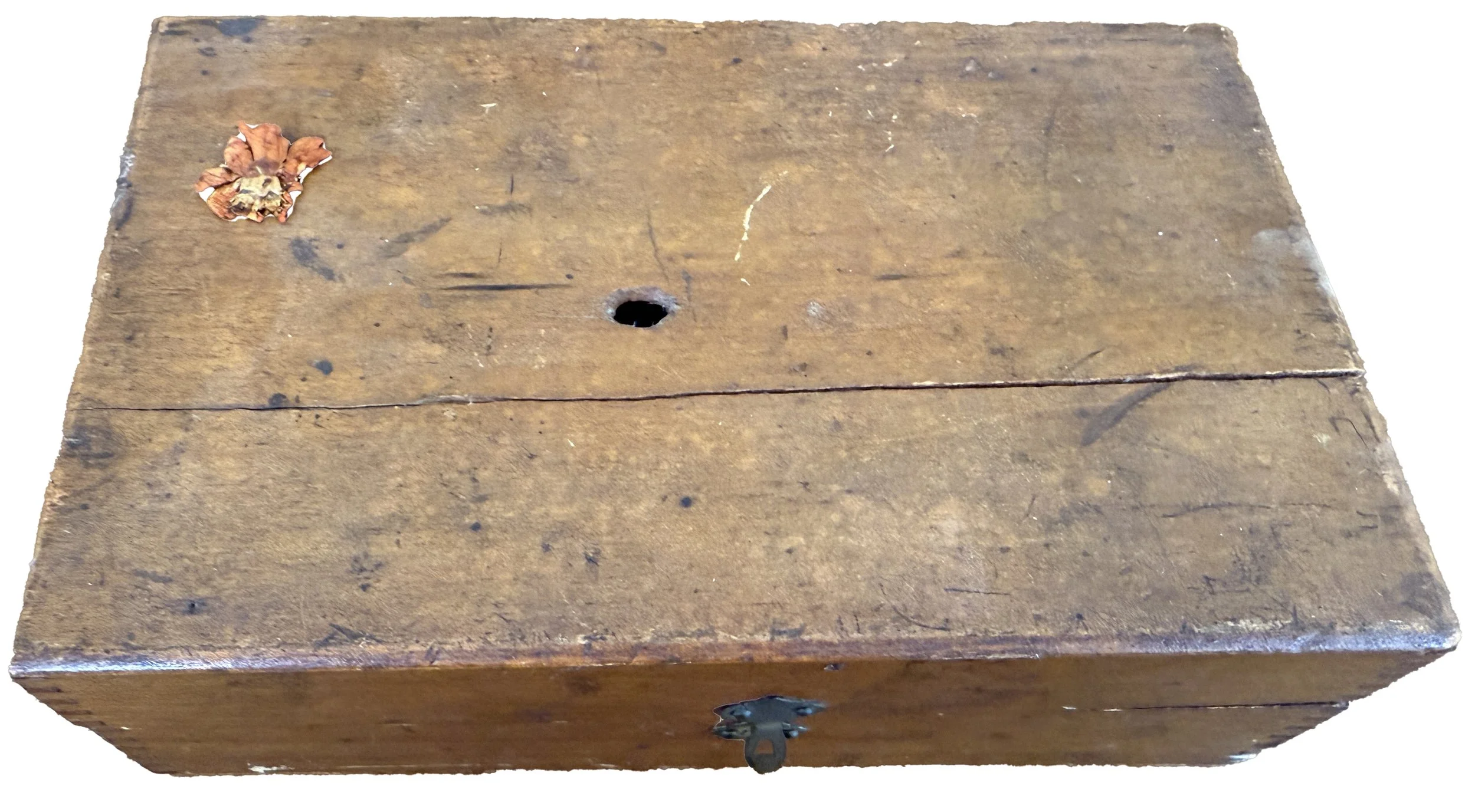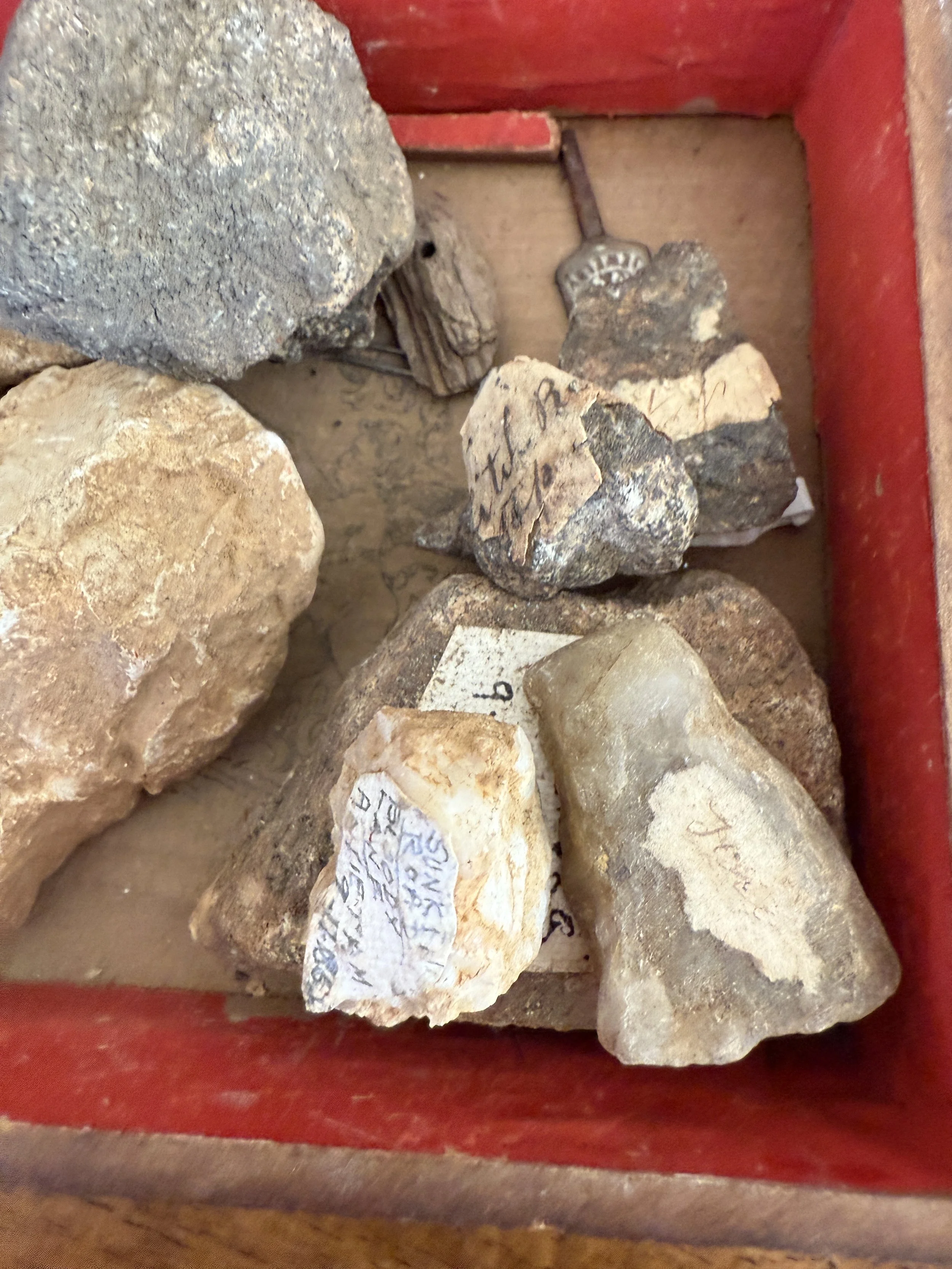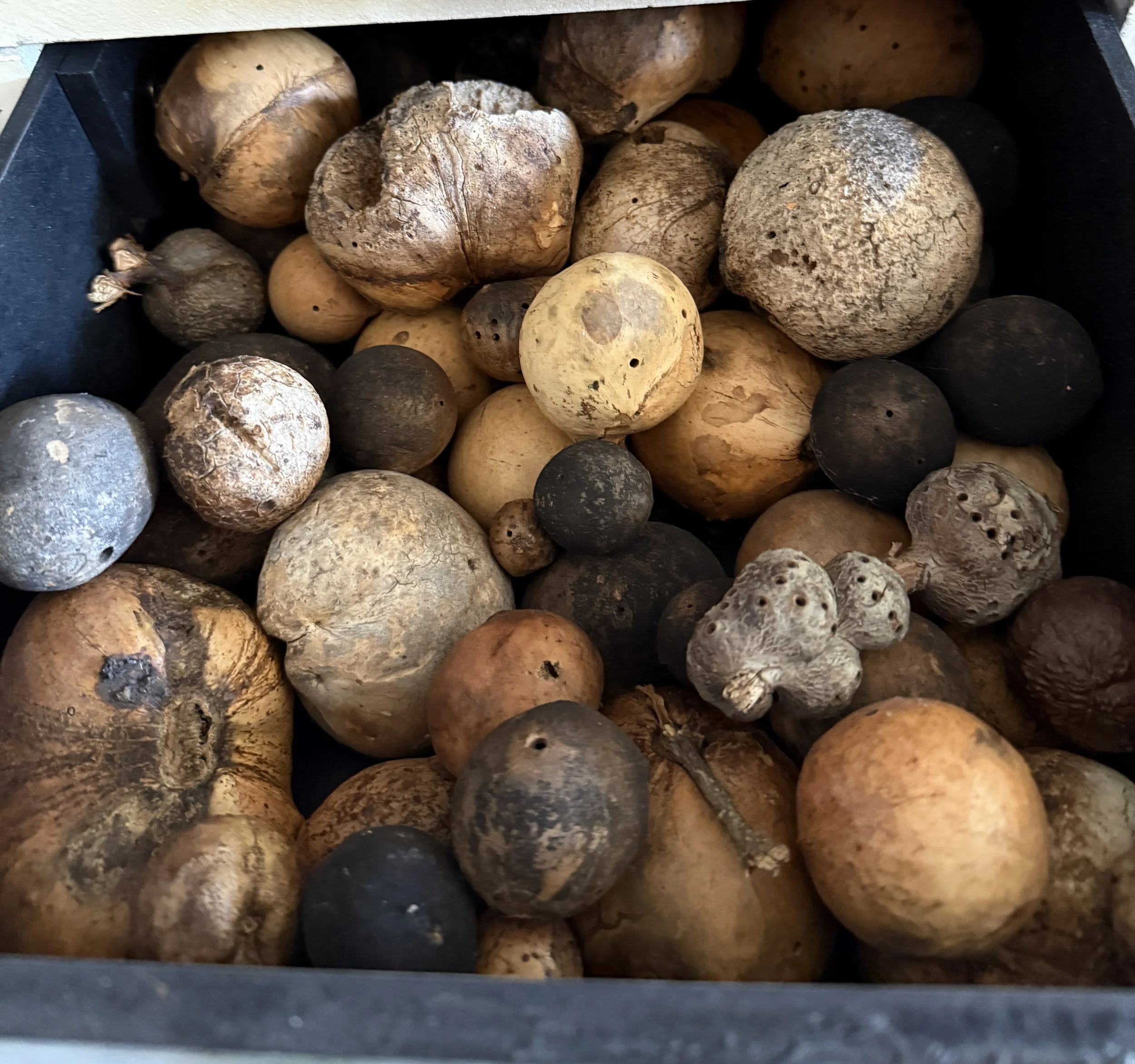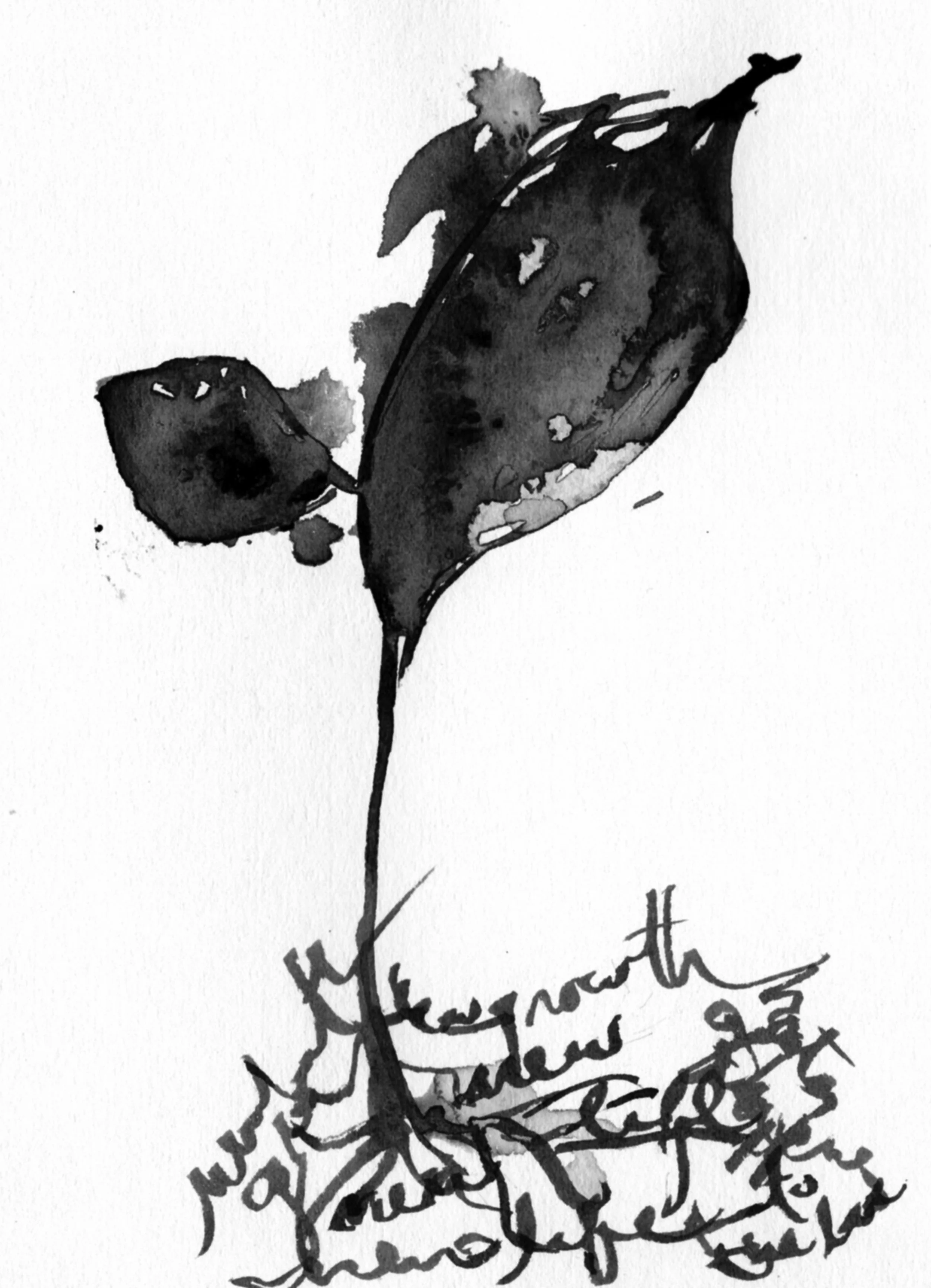Book of Trees: Oak
THE CROOKED BRANCH SERIES: EDITION #01
The Crooked Branch series of Book of Trees traces a legacy of whispers and shadows.
Battle Rocks in a Broken Box: How to create Ichabod’s Oak Gall Ink
Brew Ancient Ink, Record Your Memories, Read an Ancient Text, Engage with Oak Trees
The Mystery:
My peculiar mother hid things in boxes, secreted under an 18th-century house in the woods, with a stream running through its basement. Now she’s gone, and her hidden things are piled a continent away in my California garage. I am starting to go through them.
I found a rough wooden box with a cracked lid, full of rocks. Each rock has a piece of cloth secured to it with what looks like wheat paste. The cursive is elaborate, but legible: Gettysburg. Antietam. Shiloh. Battle names from the American Civil War, with dates.
My grandpa, Elwood Lincoln Baxter, died recently, so I can’t ask him about it. But I remembered a conversation we’d had when he was almost 100—about his great uncle. I’d taken notes. Grandpa told me that his aunt Hazel had shared a memory from her early childhood: an uncle walking up the dirt road, silhouetted against the bright morning light, in uniform. It was 1865, and the war had ended. He was home.
Grandpa said the uncle had picked up rocks from every battle he fought. And that the stones were lost.
Trees and Protection:
I did a quick investigation and found my ancestor: Ichabod Morris McConnell. Father of nine children. Private, Union Army.
He was part of a battalion that the Confederate Army’s Seminole, Choctaw, and Creek regiments defeated at the Battle of Round Mountain.
How did the writing survive 160 years?
He used Oak gall ink. The ink is purplish-black, turning sepia. It is the same ink that medieval scribes used to create their herbals.
Want to explore an herbal? Here is a link to this one:
My great-aunt Hazel was named for a tree. So were her sisters: Olive and Myrtle (my great-grandmother, notorious criminal, but that’s another story). In Celtic tradition, naming children after trees is believed to grant them the tree’s protection. Oak symbolizes strength and endurance. Sacred to druids, Oaks were considered the most powerful tree.
Ichabod carried his rocks through terrible battles. He labeled them with oak ink, protecting the memory. For me, they are the gift of roots.
Ichabod’s Oak Gall Ink Recipe:
The best part of making this was adding drops of iron liquor and watching the sepia ink billow into blackness.
Note: To be safe, keep your ink-making tools separate from your cooking tools.
Materials:
Oak Galls
A spice or coffee grinder
Distilled water or rainwater
A burner to cook on
A non-reactive pot and spoon
A jar of Iron Liquor
Paper scraps for testing color
Preservative: (whole cloves, wintergreen, or thyme essential oil)
Glass Jars
Labels
Ashes (optional)
Process:
1. Make Iron Liquor by covering rusty objects in water or vinegar for several hours or weeks. Some ancient spells call for Liquor made from 13 nails.
2. Crush or chop Oak galls.
3. Using a grinder or mortar and pestle, reduce them to a powder.
4. Place the powder in a pot. For every ¼ cup of Oak Galls, add 2 cups of water.
5. Bring the mixture to a boil for 5 minutes.
6. Add drops of iron liquor to the cooling ink to shift the color from chestnut to purplish black.
7. Pause when you have a color you like and set some aside.
8. Continue adding iron liquor to the mixture for deeper blacks, noting the amounts in your grimoire.
9. It is traditional to add ashes if the color is not deep enough, although I’ve not experienced this issue.
10. Add whole cloves or essential oils of thyme or wintergreen to prevent molding.
Modern archival ink from art stores fades in 25 years. Oak gall ink is still readable after years in a broken box in a watery basement.
Oak galls are created by the gall wasp, whose eggs cause the oak tree to grow abnormally.
Creative Practice: Protect Your Memories
Threshold meditation with stones:
Find three stones from places that matter to you. As your ink simmers, hold each one.
Breathe: four in, four hold, six out. Three rounds per stone. (Breathing out longer than in switches your body’s mode to CALM.)
As you hold each stone, remember: What threshold did you cross here? What battle (literal or metaphorical) did this ground witness? How will you label them?
To affix the labels, mix flour and water into a paste. This is wheat paste: stable and permanent. The Oak Gall ink’s chemistry etches the surface of your label’s paper or cloth, so it will not smudge. Place them somewhere your great-great-great-grandniece will find them someday.
Oak teaches: Protect your memories. They remind you that you are strong. Several recent large-scale studies show that telling your story is absolutely transformative for your mental health. Especially when, in your telling, you are strong, powerful, and thriving.
How Can I Help?
What natural art technique do you want to learn next? Comment with your request—I’ll add it to my list for future tutorials.
Have a mystery? My friend and I can help. No charge. We just love a good story.
Next week: A bit about my criminal great-grandmother, Myrtle, and what her name teaches about boundaries.
Find me on Substack: https://enidly.substack.com/p/battle-rocks-in-a-broken-box-how
Enid Baxter Ryce is the author of the books Plant Magic at Home, Ancient Spells and Incantations, The Borderlands Tarot, Field Guide to Fort Ord, and the forthcoming Grace Flows Through You. Her artwork has been exhibited at the National Gallery of Art, the Getty, and the Library of Congress. She’s a professor at CSU Monterey Bay, a fellow of the Sephardic Stories Initiative, and makes her art supplies from plants in her garden. Subscribe for weekly posts on ancestral wisdom, genealogy, and natural art practices.
